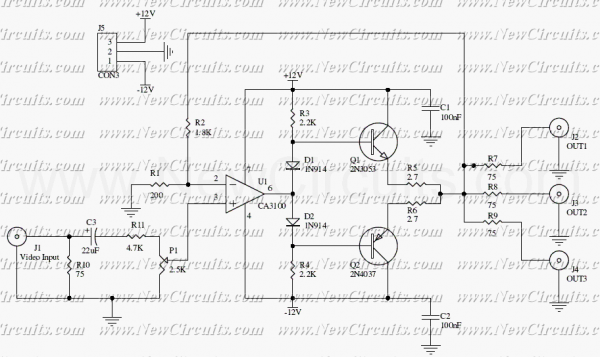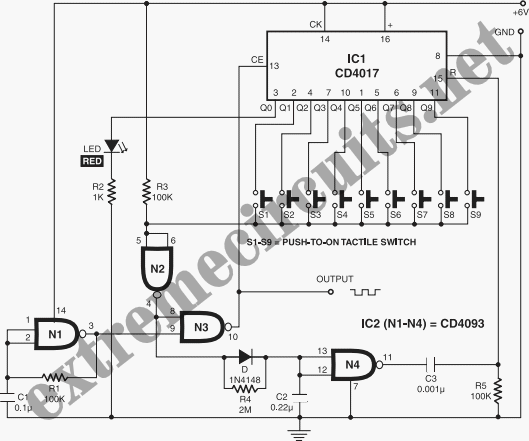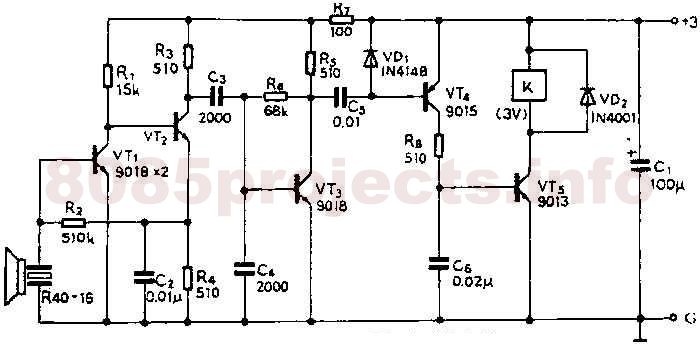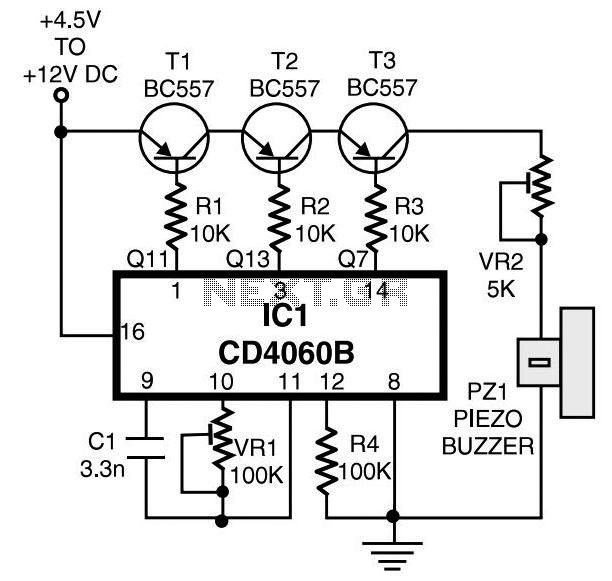
Battery-Powered Sine Generator Covers 100 Hz To 10 kHz
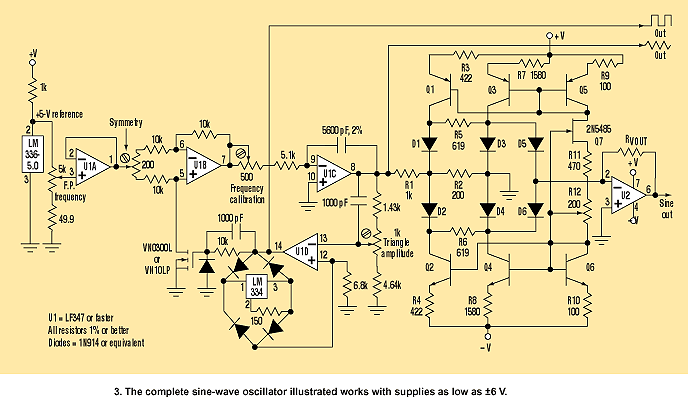
This circuit is a modified version of a function-generator circuit. It features a battery-powered sine wave generator that can be continuously adjusted from 100 Hz to 10 kHz.
The described circuit utilizes a sine wave generator to produce a continuous oscillating signal. The key components typically involved in such a circuit include operational amplifiers, resistors, capacitors, and a power source.
The operational amplifier (op-amp) is configured in a feedback loop, which allows the circuit to generate a sine wave output. The frequency of the sine wave is determined by the values of the resistors and capacitors connected to the op-amp. By adjusting these component values, the frequency can be varied smoothly across the specified range of 100 Hz to 10 kHz.
The use of a battery power supply ensures portability and ease of use in various applications where access to mains power may be limited. Additionally, the circuit may include features such as a variable resistor (potentiometer) to fine-tune the frequency output, as well as output terminals for connecting to external devices or measurement equipment.
This circuit can be employed in various applications, including signal testing, audio synthesis, and research projects requiring a stable sine wave signal. The design's flexibility in frequency adjustment makes it suitable for a wide range of experimental and practical uses in electronics.This circuit, a modification of a function-generator circuit, comprises a battery-powered sinewave generator that is continuously adjustable from 100 Hz to 10 kHz 🔗 External reference
The described circuit utilizes a sine wave generator to produce a continuous oscillating signal. The key components typically involved in such a circuit include operational amplifiers, resistors, capacitors, and a power source.
The operational amplifier (op-amp) is configured in a feedback loop, which allows the circuit to generate a sine wave output. The frequency of the sine wave is determined by the values of the resistors and capacitors connected to the op-amp. By adjusting these component values, the frequency can be varied smoothly across the specified range of 100 Hz to 10 kHz.
The use of a battery power supply ensures portability and ease of use in various applications where access to mains power may be limited. Additionally, the circuit may include features such as a variable resistor (potentiometer) to fine-tune the frequency output, as well as output terminals for connecting to external devices or measurement equipment.
This circuit can be employed in various applications, including signal testing, audio synthesis, and research projects requiring a stable sine wave signal. The design's flexibility in frequency adjustment makes it suitable for a wide range of experimental and practical uses in electronics.This circuit, a modification of a function-generator circuit, comprises a battery-powered sinewave generator that is continuously adjustable from 100 Hz to 10 kHz 🔗 External reference

